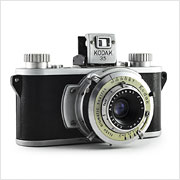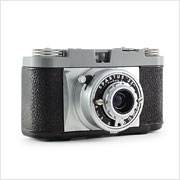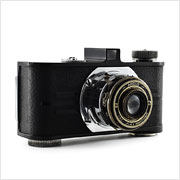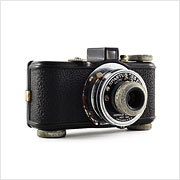Kodak 35
The Kodak 35 was the first 35mm camera manufactured by Kodak in the United States. The Kodak Retina series—earlier 35mm models—were being made in Germany starting in 1934 but as war loomed on the horizon, Kodak decided to develop a 35mm camera that wouldn’t have to rely on imported components. The other major motivation for Kodak to make the 35 was to compete directly with the Argus A and Argus C series of cameras, a battle it would eventually lose.




